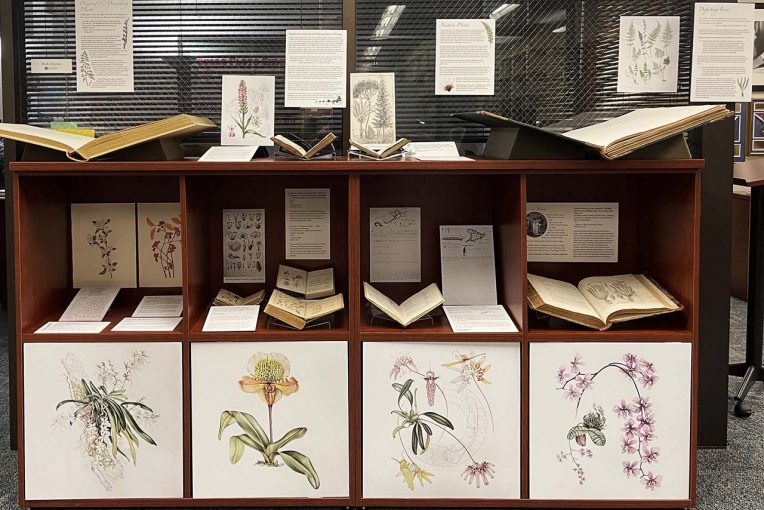The Special Collections Department at Milner Library is highlighting botany through different types of books and illustrations in a new exhibit, Drawing and Describing Plants. The featured books showcase a variety of approaches to drawing and to description, ranging from the poetic and popular to the scientific. In most cases, they balance illustrations with descriptions. The volumes include works of art as well as significant textbooks from the 1800s that were instrumental in solidifying botany as a normal course of study, and that helped to introduce entire generations to the field.
An exciting new acquisition on display

Among the textbooks on view is a first edition of Familiar Lectures on Botany (1829) by Almira Hart Lincoln Phelps. Familiar style books were written for the general public—often specifically for children, but also found an audience with women and working-class men. These books were written in a friendly conversational style and were intended to simplify academic topics while often encouraging the readers to engage, observe, and conduct simple experiments. These books were widely used in science education and were often written by women, who found a role not as scientists, but as popularizers and communicators of scientific knowledge.
Lincoln Phelps authored her botany text at a time when there was no other truly basic resource to introduce the foundations of the field. She had studied with the noted educator and science popularizer Amos Eaton, who had encouraged her to add fieldwork and formal experiments to her science curriculum at the Troy Female Seminary. Botany provided a perfect opportunity to teach her students to observe plants, gather and prepare specimens, and learn basic lab procedures using microscopes and dissection techniques. Familiar Lectures on Botany was revised and printed for the next 40 years and became one of the most widely used introductory botany textbooks.
For many students, this introduction to basic concepts and hands-on techniques formed the basis for all their later scientific studies. Fittingly, there is a small amount of plant material pressed between the pages of our first edition of Phelps’ text, providing a tiny testament to the use of her book in field work.
“The study of nature, in any of her forms, is highly interesting and useful. But …the vegetable world offers a boundless field of inquiry, which may be explored with the most pure and delightful emotions.”
—Almira Hart Lincoln Phelps, in Familiar Lectures on Botany, 1829
View the exhibition or schedule a class session in special collections
Drawing and Describing Plants is on view through Wednesday, December 22, 2021 anytime the Special Collections Reading Room is open. Please contact Rebecca Fitzsimmons (rlfitzs@ilstu.edu) for additional information or if you would like to arrange a class visit.

